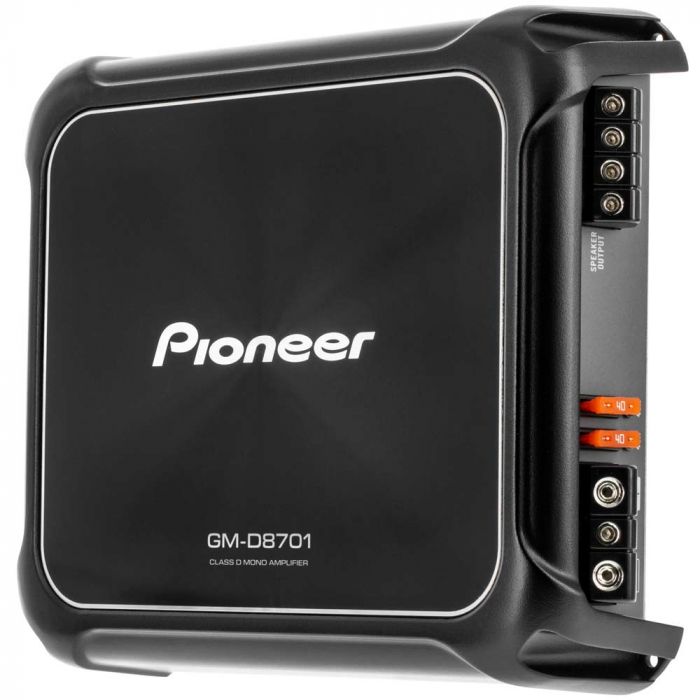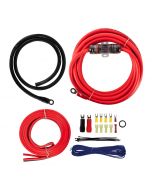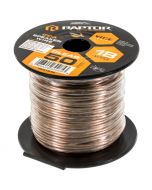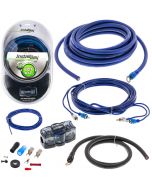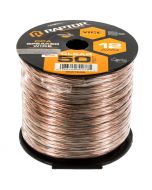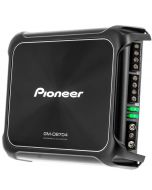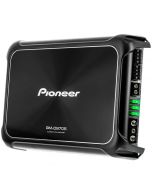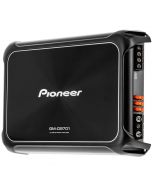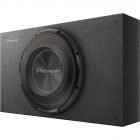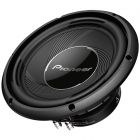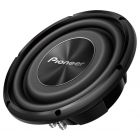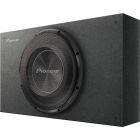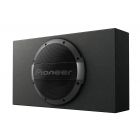We use cookies to make your experience better. To comply with the new e-Privacy directive, we need to ask for your consent to set the cookies. Learn more.
Pioneer GM-D8701 1,600 Watt Class FD Mono Amplifier with wired bass boost control
- GM-D Series 1,600 Watt RMS 1-Channel Class FD Car Amplifier
- Class FD Design Offers Efficiency and High-Quality Sound
- Continuous Power Output (1 Ω, ≤ 1% THD+N): 800 W x 1
- Continuous Power Output (2 Ω, ≤ 1% THD+N): 500 W x 1
- Continuous Power Output (4 Ω, ≤ 1% THD+N): 300 W x 1
-
Features:
- GM-D Series 1,600 Watt RMS 1-Channel Class FD Car Amplifier
- Preamp RCA outputs to connect multiple amps
- MOSFET power supply for large power output
- LED power (green) and protect (red) indicators
- Variable Low-pass electronic crossover (40-240 Hz, 12 dB/octave)
- 3-way protection circuitry (thermal, overload, and speaker short protection)
- Dual speaker terminals simplify the hookup of multiple speakers
- Heavy duty aluminum alloy heat-sink
- Nickel-plated screw terminals
- 1 channel operation
- CEA-2006 compliant amplifier
- 4-gauge power and ground leads and a 80-amp fuse recommended
- Frequency Response: 10Hz to 240 Hz
- Signal to noise ratio: >100dB
- Total Harmonic Distortion (THD): <0.5% (1 kHz)
- Variable bass boost: 0 dB - 18 dB (50 Hz)
-
Inputs and Outputs:
- Single-channel operation
- Nickel-plated RCA level inputs and outputs
- Input Sensitivity Low level: 200mV-6.5V
-
Max Power Output:
- Total Power Output: 1,600 Watts
-
RMS Power Output:
- Continuous Power Output (1 Ω, ≤ 1% THD+N): 800 W x 1
- Continuous Power Output (2 Ω, ≤ 1% THD+N): 500 W x 1
- Continuous Power Output (4 Ω, ≤ 1% THD+N): 300 W x 1
-
Built in Crossover:
- Low Pass: 40Hz - 240Hz @ 12dB/octave
-
Dimensions:
- Overall Dimensions: 2-3/8" (H) x 10-3/8" (L) x7-7/8" (W)
| Manufacturer | Pioneer |
|---|---|
| Part Number | GM-D8701 |
| Amplifier Topology Class | Class FD |
| Number of Channels | 1 Channel |
| Total RMS Power at 1 ohm | 800.00 |
| Total RMS Power at 2 ohm | 500.00 |
| Total RMS Power at 4 ohm | 300.00 |
| RMS Output per Channel (x1 at 2 ohms) | 500.00 Watts |
| RMS Output per Channel (x1 at 1 ohms) | 800.00 Watts |
| RMS Output per Channel (x1 at 4 ohms) | 300.00 Watts |
| Total Peak Power Output | 1,600.00 (Watts) |
| Amplifier Bridging | Not Bridgable |
| Minimum Impedance in Bridged Mode | 1 ohm |
| Minimum Impedance in Un-Bridged Mode | 1 ohm |
| Strappable Amplifier | No |
| RCA Pre-amp Audio inputs | 1 Pair |
| RCA Pre-amp Audio outputs | 1 Pair |
| Preamp voltage | 150 mV - 12 V |
| Speaker level inputs | Yes |
| Gain Control | Yes |
| Bass Knob / Remote Gain | Yes |
| Built in Crossover | Low-pass |
| Cooling Fan | No |
| Color | Black |
| Warranty | 1 Year |
| Recommended Power Wire Gauge | 4 Gauge |
| Overall Height | 2.38 inches |
| Overall Length | 10.38 inches |
| Overall Width | 7.88 inches |
| CEA2006 Compliant | No |
| UPC Code | 884938421898 |
| Return period | 30 days |
| Exchange period | 30 days |
Our testing and analysis of the Pioneer GM-D8701
Pioneer's got some new amps for 2019, they completely replaced their GM digital series amplifiers with clean looking new models, like the GM-D8701 Class D monoblock.
Really, the only differences between the new model and old D8601, is that the 8701 model has a new look with a high quality textured flat panel and tough frame. Besides that, they're the same size and have the same specs. Pioneer’s extra-efficient Class-D digital amplifiers mark a dramatic improvement in power output capability, yet are 50% smaller than the current GM-Series Class-AB amplifiers, so this monoblock will fit in most applications with ease thanks to its dimension of 10-3/8" x 2-3/8" x 7-7/8".
At 1 ohm the amplifier puts out 800W RMS, at 2 ohms it does 500W RMS and at 4 ohms it squeezes out 300W RMS. Not bad for a monoblock that costs under $200 and is stable at 1 ohm, 2 ohm and 4 ohm impedances.
GM-D8701 Amplifier Testing
As always, let’s test it out ourselves.
One channel driven, 4 ohm, 40 Hz, 14.4v
Rigol Oscilliscope: 35.7 volts of output.
AMM-1: 305 Watts
Fluke Voltmeter (Input power): 14.23 volts
Current draw: 24.97 amps
One channel driven, 2 ohm, 40 Hz, 14.4v
Rigol Oscilliscope: 34.1 volts of output.
AMM-1: 536 Watts
Fluke Voltmeter (Input power): 13.93 volts
Current draw: 53.45 amps
One channel driven, 1 ohm, 40 Hz, 14.4v
AMM-1: 816 Watts
Fluke Voltmeter (Input power): 13.90 volts
Current draw: 71.98 amps
Amplifier Adjustments
The amplifier's adjustments include gain control and the low pass filter of the subwoofer. Use the included remote bass control to make adjustments up front, plug it directly into the bass boost input.
Amplifier Protections
To prevent circuit shutdown, Pioneer's new digital amplifier circuit "Protection Control System" senses its internal temperature and automatically moderates input level accordingly. Automatic Signal Sensing and Turn-On detects an input signal and turns the amplifier on as soon as you turn the ignition.
Amplifier Terminals
Connecting a source to the amplifier is easy thanks to its RCA inputs, if you're stereo doesn't have RCA outputs, get a Line Output Converter. The amplifier's RCA outputs allows daisy chaining of multiple amplifiers together for crazy power output.
Besides power and ground terminals, the amplifier has speaker output terminals as well as two 40 amp fuses to help prevent damage with the LED power and protect indicator. We recommend 4 gauge power and ground leads, and 10-12 gauge for the speaker and subwoofer connections.
Car amplifier installation
We show you the complete process of installing a Pioneer Double DIN car stereo in a Chevy truck. The in-depth video shows the installation of the interface, and steering wheel control.
Amplifier Installation basics
Let's start with the basics of adding or installing a car amplifier. First you will need to plan your installation and power wiring, this usually is the most difficult part of the installation for most.
How to choose the proper wire size explained
What size power wire do I need for my amplifier? Well, that depends on the length of the wire and the power consumption of the amplifier. We walk you through how to choose the right gauge wire and wire material depending on your amplifier installation requirements.
How to wire speakers and subwoofers to your new amplifier
In our third video we demonstrate the various ways you can wire speakers and amplifiers to all types of amplifiers. There different ways to do this depending on the type of amplifier you choose to purchase.
What is gain? How do I set it properly?
In our fourth video we demonstrate how to set the gains on your amplifier to prevent damage to your speakers, subwoofers and even possibly your new amplifier. Using a portable oscilloscope we show you how to set your gains.

